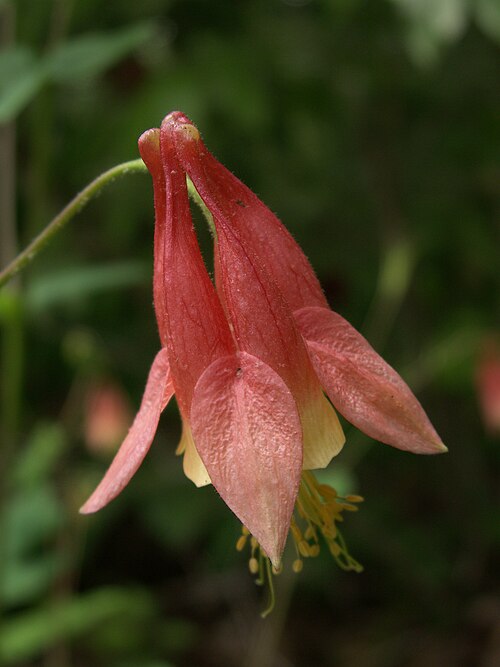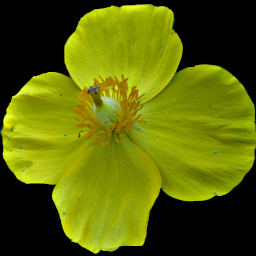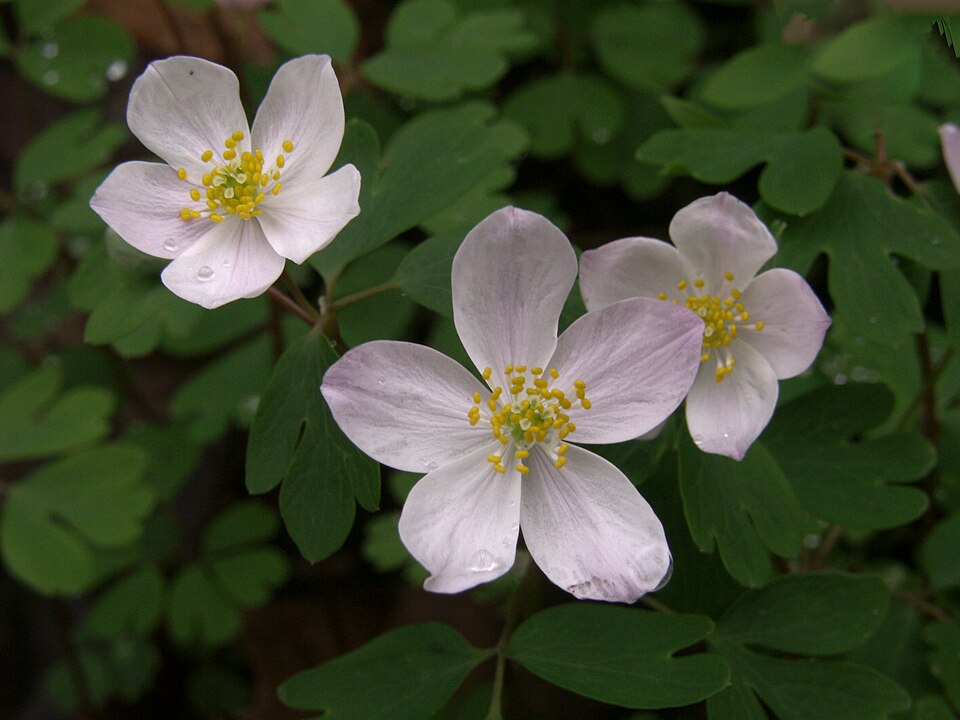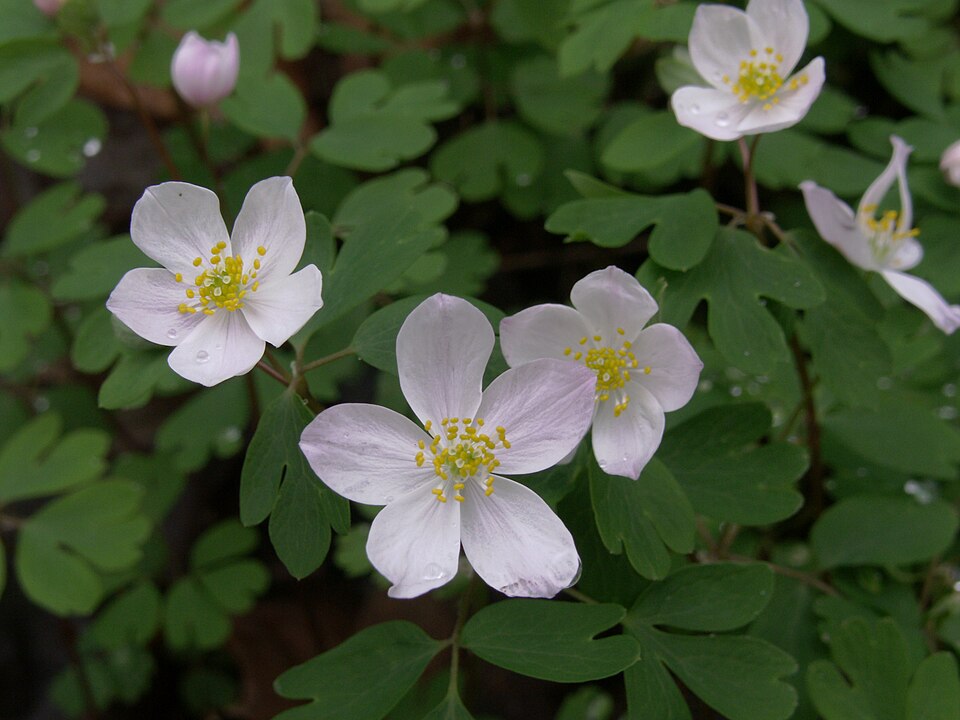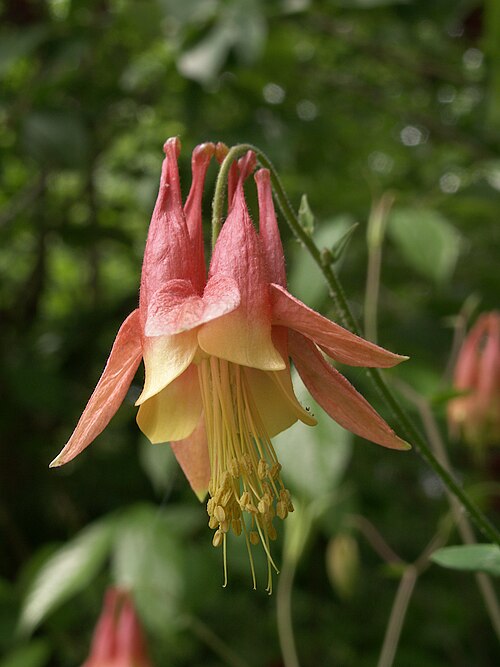
Little red-and-yellow bells with bundles of stamens for clappers. There is nothing else remotely like this flower in our wild flora, except for the cultivated European Columbine (Aquilegia vulgaris) that occasionally escapes from gardens in the city, whose flowers are blue, purple, pink, or white, but never red and yellow.
This plant was blooming at the edge of the woods on the grounds of Fallingwater in Mill Run.
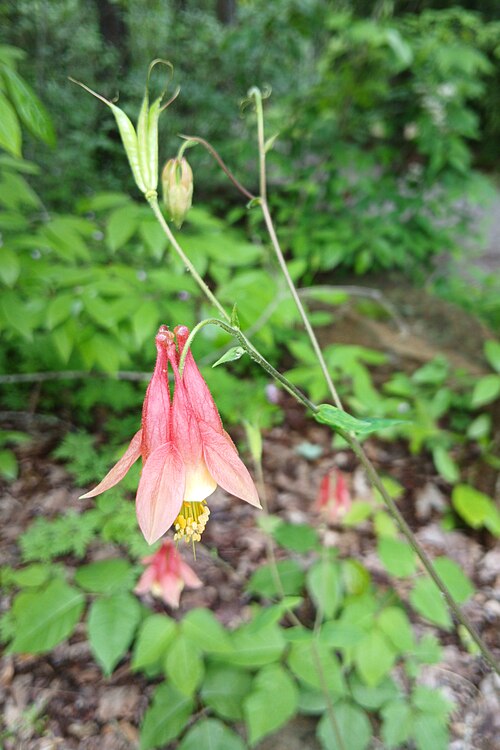
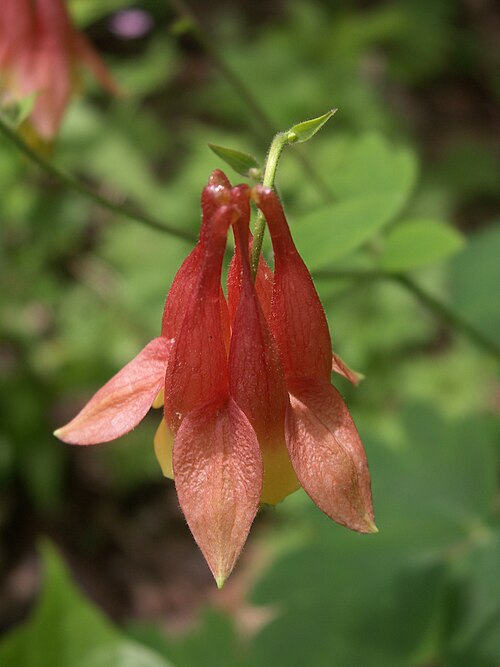
The name “columbine” comes from the form of the flowers, which—if you have the right kind of imagination—look like a conference of pigeons all facing one another.
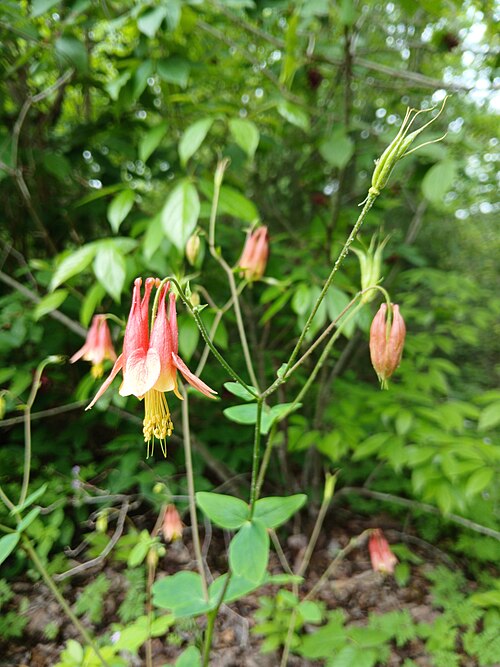
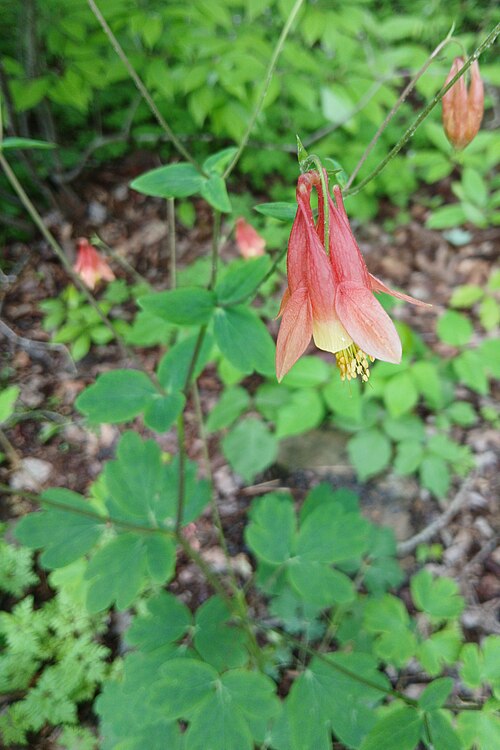
For a description of the species, see the Aquilegia canadensis reference page.
